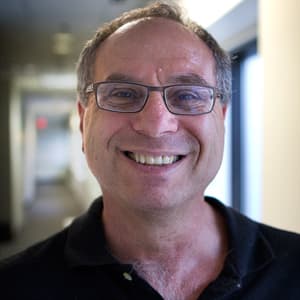Advertisement
A Climate Resilient Community In Newburyport Rises From Toxic Ashes
Resume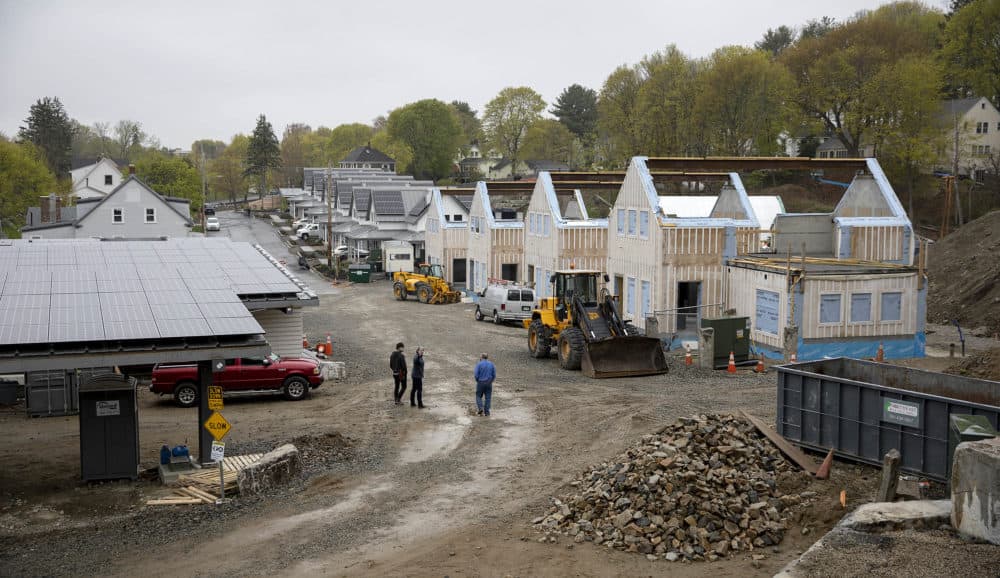
Just off Route 1 in Newburyport, a bit of the future is under construction. A huge orange crane hoists a three-story concrete slab and flips it precisely in place, forming the wall of a home. The crane accomplished in five days what would have taken weeks using standard building techniques.
"The construction system has not been done before in this scale for residential," says Boston developer David Hall, who with his partner, architect Keith Moskow, modified the commercial building method known as "tilt-up construction" to create the Hillside Center for Sustainable Living. They're building the village on a remediated brownfield, after removing 3,000 tons of toxic ash.
"There were places where it was 8 feet deep," Hall says with a laugh. "It was a dump."
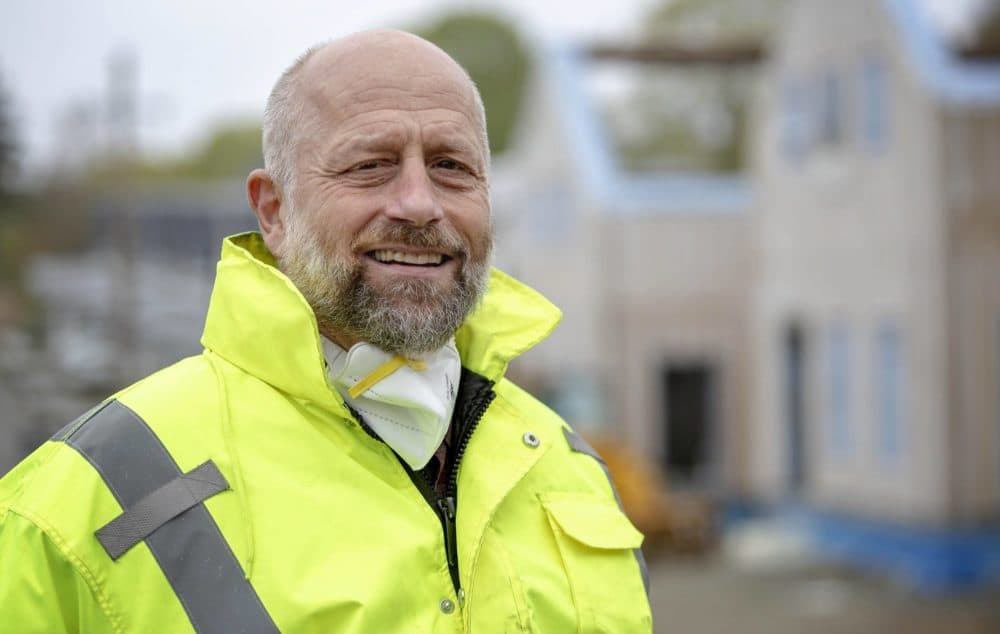

Hall and Moskow had decades of experience building on urban brownfields and saw the possibilities in this hazardous waste site. "We jumped on it," said Hall, "and created this vision of what could be."
The Hillside Center is an experiment — the type that Massachusetts is going to need as it attempts to meet ambitious climate goals that mandate net-zero climate emissions by mid-century. In less than 30 years we have to transform virtually every aspect of the state's economy. The goal: to construct a climate-resilient society powered by renewable energy whose benefits are shared by all.
And if Hillside is any indication, there will be tough decisions, painful compromises and tradeoffs along the way.
'Something Really Novel'
The developers finished the first phase of construction last fall, and the dozen one-, two- and three-bedroom townhomes are already rented. Phase two is underway.
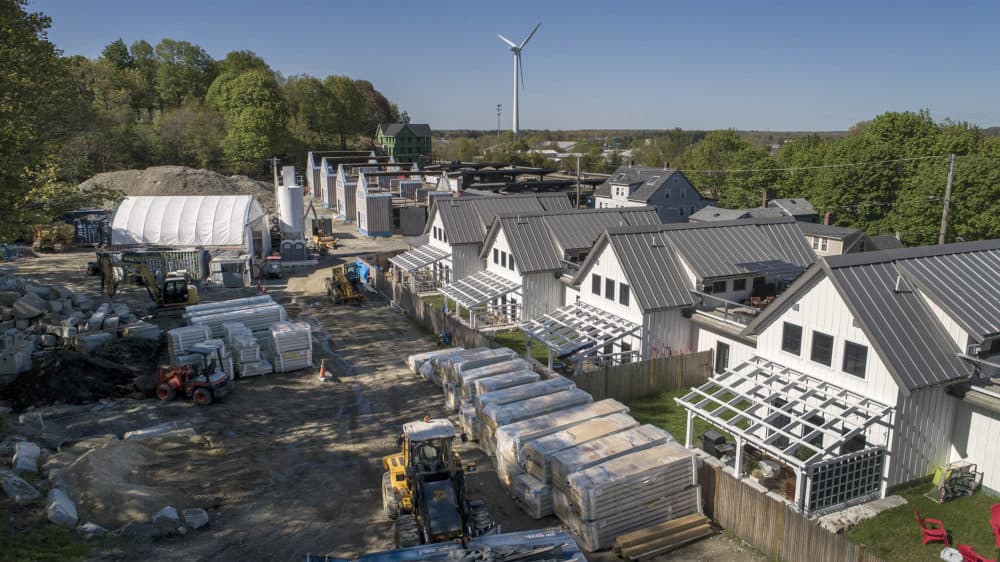
Hall — a self-described "energy nerd" — and Moskow designed the village community to address the largest contributors to climate change emissions: housing, fuel, food and transportation.
"This is our first big foray into something really novel," says Hall.
How novel? "Wicked novel," he laughs.
When completed, this community of 48 one-to-three-bedroom units will be built almost entirely out of concrete.
"We jumped on it and created this vision of what could be."
David Hall
The concrete walls are fabricated in an open-air shed that construction workers call "Santa's workshop." Workers secure the walls with steel beams, seal the joints between ceilings and floors, and insulate everything with 12 inches of Styrofoam. Then they use knives to carve spaces in the white blocks to run electrical and plumbing conduits and high powered ventilation — air flow is critical to preventing the growth of fungi and bacteria.
Each unit is effectively a thermal battery that stores and slowly releases heat. The windows are triple glazed. Rooftop solar provides electricity. The price of the energy is included in the rent.
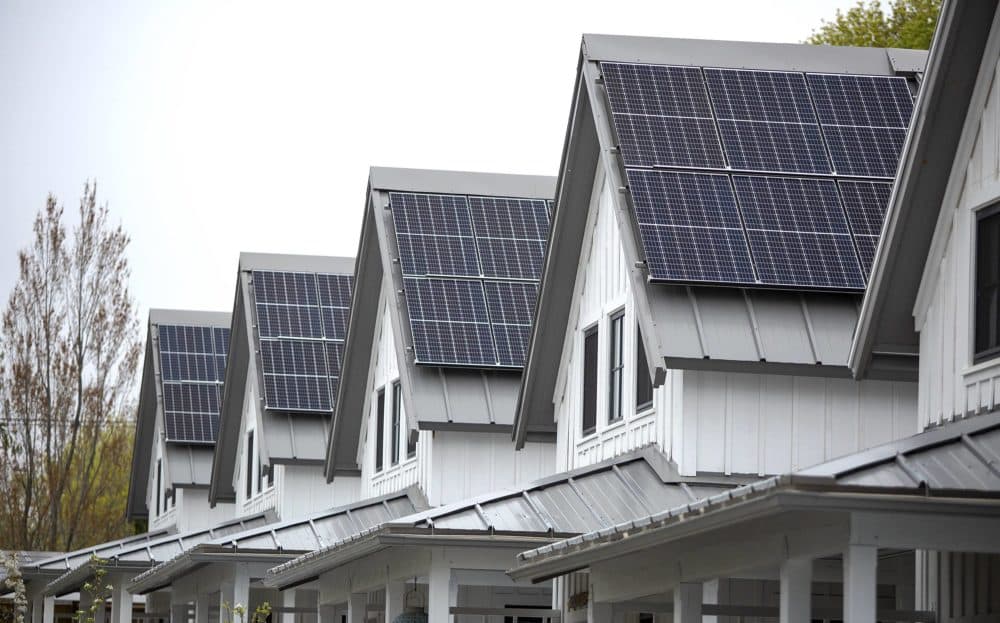
"That electricity does everything, says Hall: "It does your hot water, it does your heat, it does your cooling, plug loads, lighting." And because the structures are so energy-efficient, the solar panels generate more electricity than the apartments consume. Just 1300 watts is all it takes to power a unit’s heat pump.
"So in January — on the coldest night — essentially the electricity from a hair dryer is doing the work of heating your whole home," Hall says.
Green Living Doesn't Come Cheap
"This first building was really like a startup company, because everything you were doing you were doing for the first time," says Sarah Holden, the owner of Fishbone Project Management, who is overseeing construction.
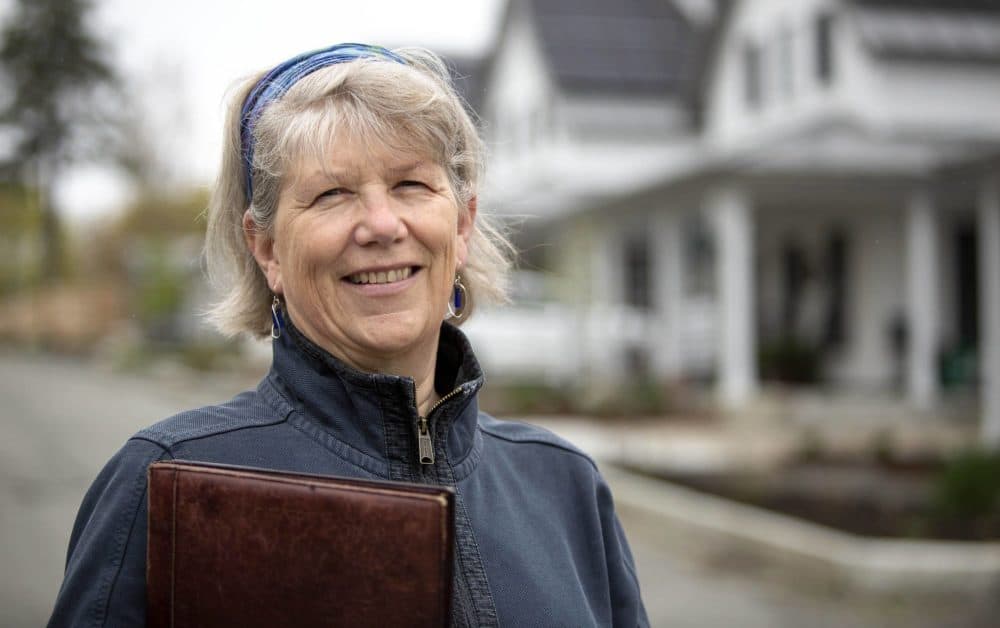
Holden praises Newburyport building officials for embracing the many innovative, sustainable features used at Hillside.
"We collect rainwater off the roofs," she says. "It will go into a cistern under the greenhouse and that will be pumped back to the units for toilet flushing."
The community greenhouse is part of the landscape master plan developed by Cornelius Murphy of Whole Systems Design Collective. Murphy says it's an experiment to reduce carbon emissions while growing food for residents.
"Most of the site is planted with what we call a 'multistoried perennial food forest,'" Murphy says. "We have nut trees in the upper canopies, we’ve got fruit trees in the understory, we’ve got basic perennials below the fruit trees, and we have ground covers — all of which are producing food for the residents of Hillside."
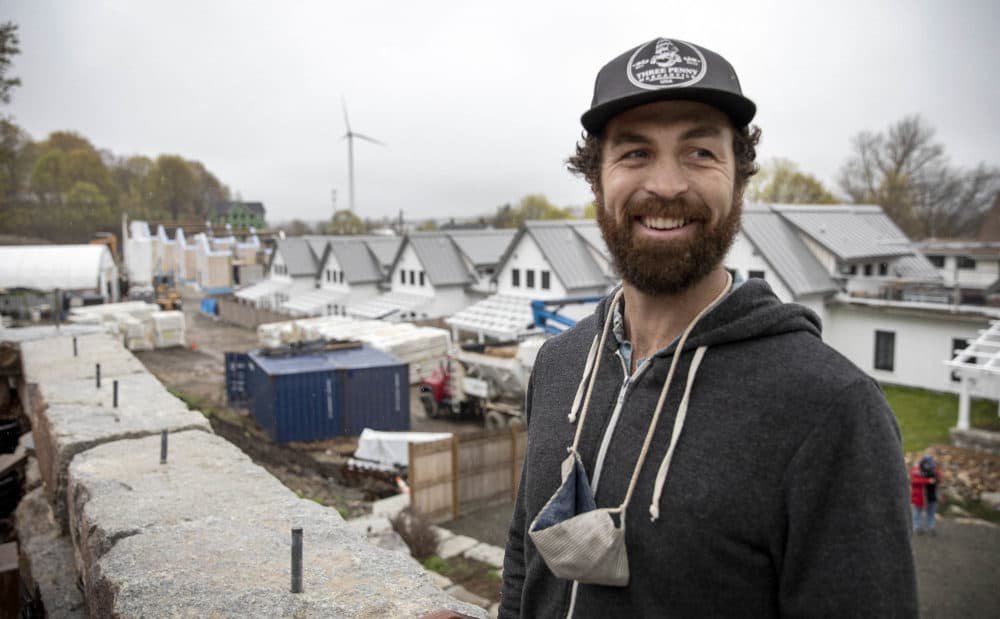
But all this green living doesn’t come cheap. A one bedroom, including utilities, is $2,200 a month.
So to create an economically and socially diverse community, the developers donated land on the site for an affordable housing project. The YWCA of greater Newburyport will own and operate the building. John Freehan, executive director of the YWCA, says 10 residents will each have a one-bedroom apartment with a private bath, and share a common kitchen and community space.
"It’s just incredible," Freehan says. "For low income people, the most challenging issues they face are food security, housing security and transportation. And this project is designed to address all three of those needs."
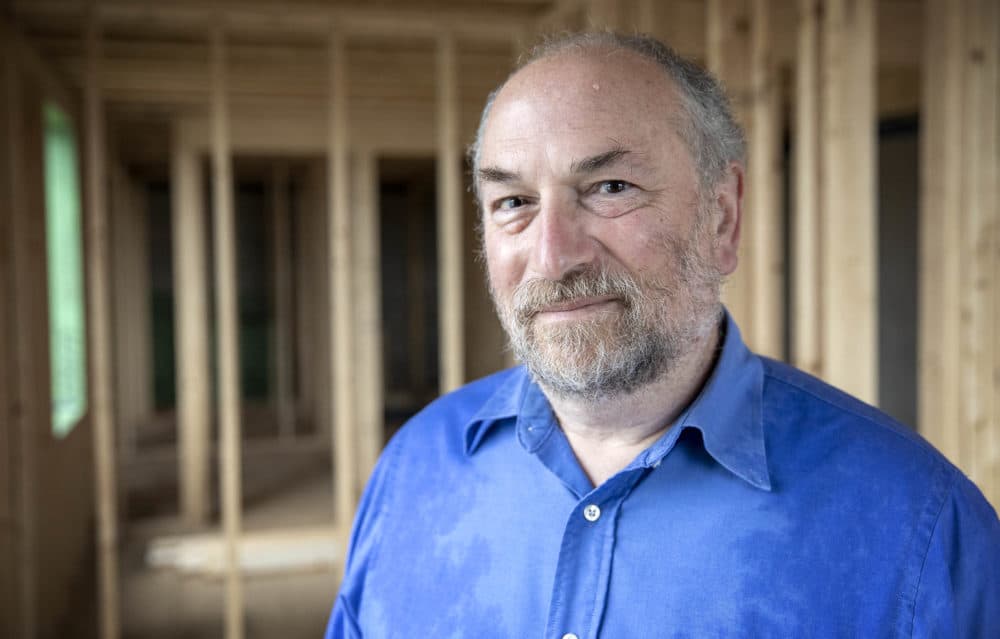
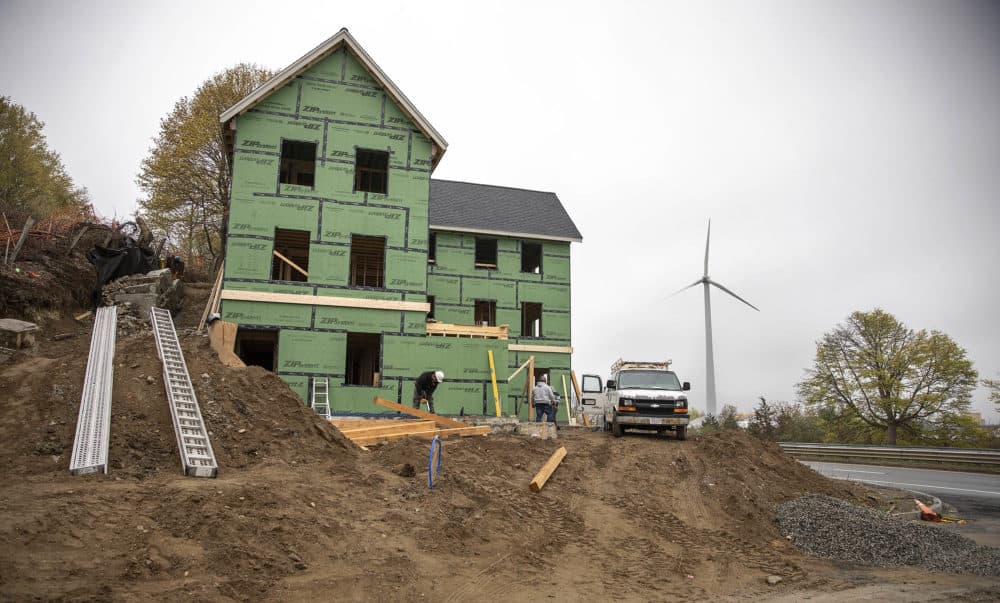
At Hillside residents can share a fleet of small, electric vehicles. There's also a community bike shed, and downtown Newburyport and the commuter rail to Boston are just a short walk away.
Sounds like eco-paradise, right? Not quite.
'A Very Controversial Decision'
To foster community, the developers designed townhomes with large farmer porches — complete with rocking chairs — that emphasize outdoor living. Each unit also has a huge deck or patio, which includes a natural gas hookup.
"It was a very controversial decision," David Hall says. "If everyone were burning wood in a fire pit, it would be horrific. People want to extend their outdoor time, and it seemed the best way to do that was to make natural gas available."
But the bigger climate-construction conflict comes from the very material that helps make Hillside Center so sustainable: the ubiquitous concrete. The material makes the community resilient to flooding and wildfires – and even the region’s infrequent earthquakes.
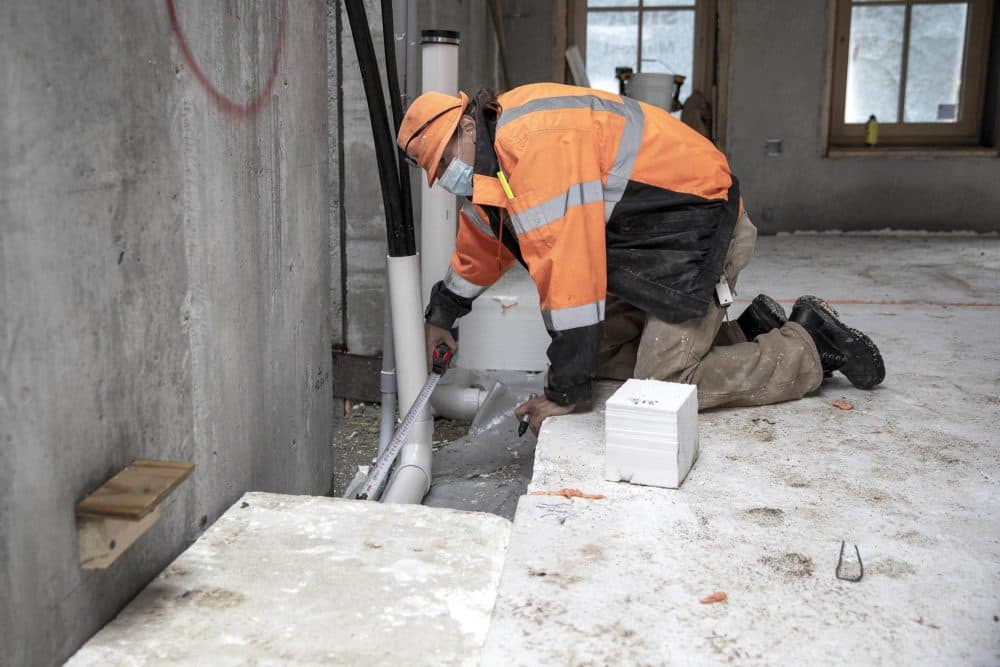
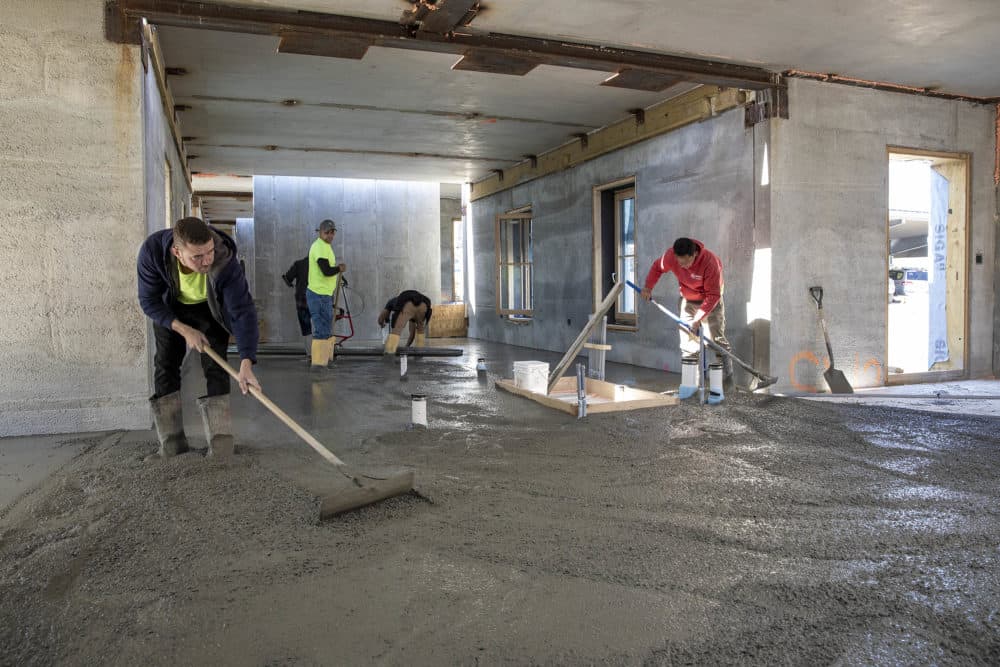
But concrete requires cement, and making cement involves burning huge amounts of fossil fuels and releasing climate-warming carbon dioxide. Concrete production worldwide accounts for 8% of global CO2 emissions.
Developer David Hall admits: it’s a big problem.
"Certainly, the durability of this form of construction from a resiliency standpoint is the best," he says. "But we have to get the carbon out of the concrete. So that’s our goal."
Hall tried to get two Canadian companies to deliver their "green" concrete to Newburyport, but the firms wouldn’t ship redi-mix to Massachusetts.
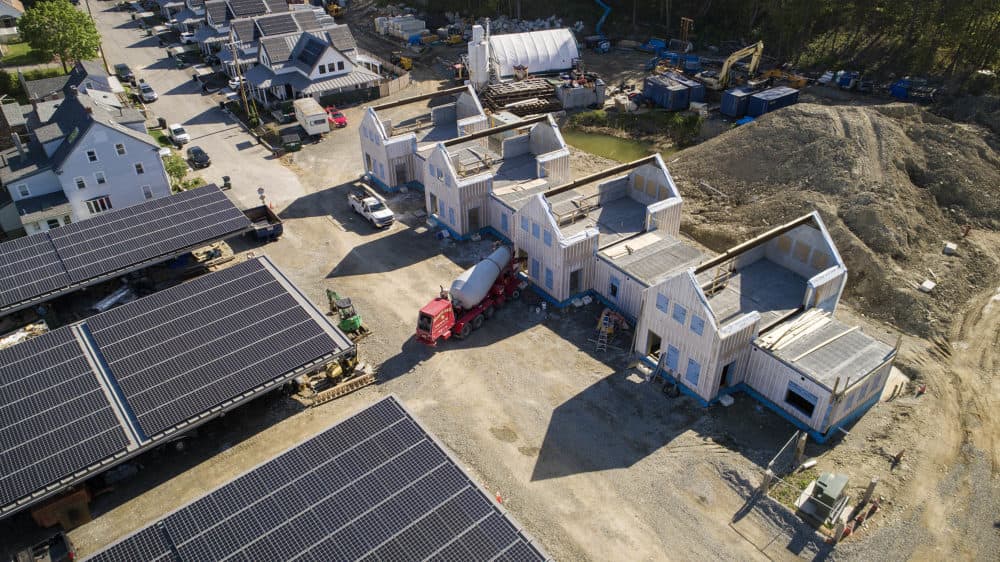
Still, the developers believe there’s an even stronger component being built into Hillside that makes it sustainable: the community itself.
"After a hurricane, people will often speak to the fact that what got them through was the community gathering together and sharing," Hall says. "So community is a big part of resilience, maybe often not considered."
Hall and Moskow are looking for a site to build their next sustainable community. Perhaps soon another village will rise from the ashes of a brownfield, and become more resilient to climate change.
This segment aired on May 14, 2021.
